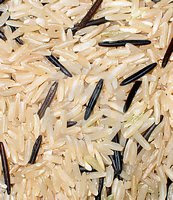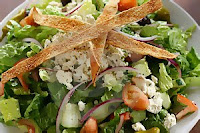 Elimination or allergy diets are used to isolate food allergies or food sensitivity. A food allergy describes an immune system response, while food intolerance is an adverse reaction to food (unrelated to the immune system).
Elimination or allergy diets are used to isolate food allergies or food sensitivity. A food allergy describes an immune system response, while food intolerance is an adverse reaction to food (unrelated to the immune system).
There are a number of medical symptoms that may be related to food; candida, irritable bowel syndrome, diverticulitis, asthma, eczema, migraines, unexplained rashes, and lactose intolerance.
Using Elimination Diets
The basic elimination diet first removes all potential food allergens from the diet, and then re-introduces these foods one at a time. This process should always be undertaken in consultation with your physician.
When undertaken an elimination diet, it is advisable to keep a food journal, and log all food items and amounts as accurately as possible - along with any symptoms experienced. This can help to isolate food allergies or intolerances.
Basic Elimination Plan
Eliminate the following foods from the diet for a period of 7 days to a month:
-Dairy products, including cheese. (Instead, use soy milk and soy cheese; rice milk, rice-based ice cream.)
-Egg and egg-containing products.
-Food products containing gluten, such as wheat and wheat-based products (including pasta), and barley, oat or rye grains. (Alternative grains could be brown rice, buckwheat, spelt, millet, potatoes or sweet potatoes).
-Citrus fruits.
-Corn and corn-containing products.
-All processed foods, including caffeine.
Note that suddenly stopping some foods (such as caffeine) can result in withdrawal symptoms (typically headaches) - however this should only last a few days.
Next, reintroduce one food group to your diet roughly every 5 days.
The reintroduction period allows sufficient time to determine any intolerance.
Other Elimination Diets
Fasting
This drastic elimination diet involves fasting for the first 5 days, taking nothing but bottled spring water. This kind of elimination diet should be reserved for only the most difficult cases.
Do not try this fasting approach without first consulting your doctor.
Lamb-and-Pears Elimination Diet
As the name suggests, this diet involves only eating lamb and pears. The diet is sometimes modified to a turkey and pears, or turkey, rice and pears). This diet is also for only the more severe cases.
Few-Foods Elimination Diet
The next step up is the few-foods or rare-foods elimination diet plan. This involves eating a dozen or so foods that the patient eats only rarely.
The Rare-Food Elimination Diet
This is an extension of the few-foods idea, except that instead of eating uncommonly- eaten foods the patient is asked to eat exotic items (e.g. yams, buckwheat).
The Regular Elimination Diet
This is the typical form of elimination diet where most fruits, vegetables, fish and meats are allowed, but wheat and other cereals, milk, eggs, and other common offending foods are eliminated. This type of elimination diet is often the most helpful.
Take Free Diet Personality Test Today!
 The principle behind the name is that you achieve your weight-loss goals by smashing bad habits and misconceptions about diet. The diet follows a 90 day program in 4 phases - detox, foundation, construction, and the temple.
The principle behind the name is that you achieve your weight-loss goals by smashing bad habits and misconceptions about diet. The diet follows a 90 day program in 4 phases - detox, foundation, construction, and the temple.









































